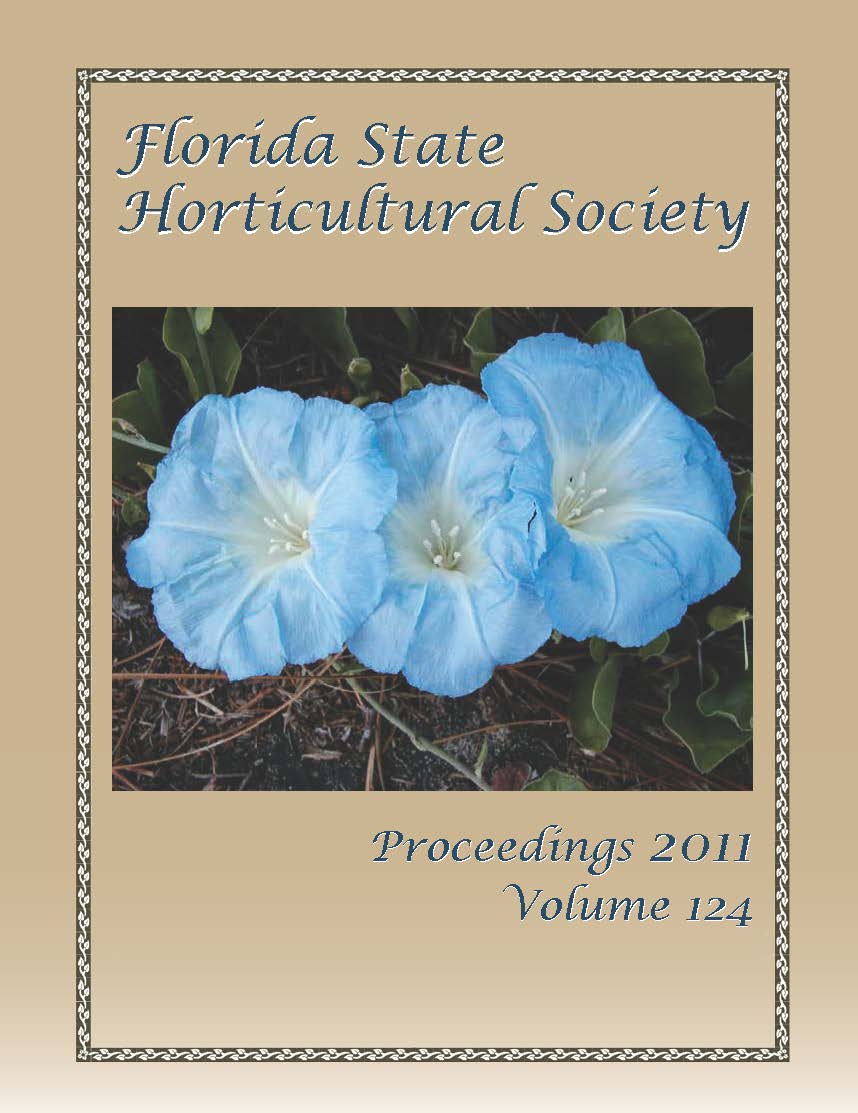Bell Pepper Production under Protective Structures: Evaluation of Soilless Media and Container Types
Abstract
Bell pepper (Capsicum annuum) production in Central America and the Caribbean has become one of the main agricultural activities for exporting into the U.S. and Europe. To guarantee constant supply and quality, small and medium-size growers could use structures, such as greenhouse and high tunnels. Crop irrigation and fertilization are influenced by the growing media and the wrong selection of the media may increase fruit and flower abortion, lower fruit number and size, and thus increase postharvest losses. This study was conducted to assess the performance of three media and three container types on the growth and yield of bell pepper under a net house. The media used were pine bark, coconut coir, and potting mix (Fafard Mix 2) combined with boxes (2.6 gal/plant), bags (2.7 gal/plant), and pots (2.5 gal/plant). Marketable yields were measured for four harvests. The results showed that there was significant interaction between media and containers. Potting mix in pots, bags, and boxes, pine bark in bags, and coconut coir in boxes, and bags had the highest marketable fruit weight followed by coconut coir in pots and pine bark in pots, pine bark in boxes had the lowest yields.

